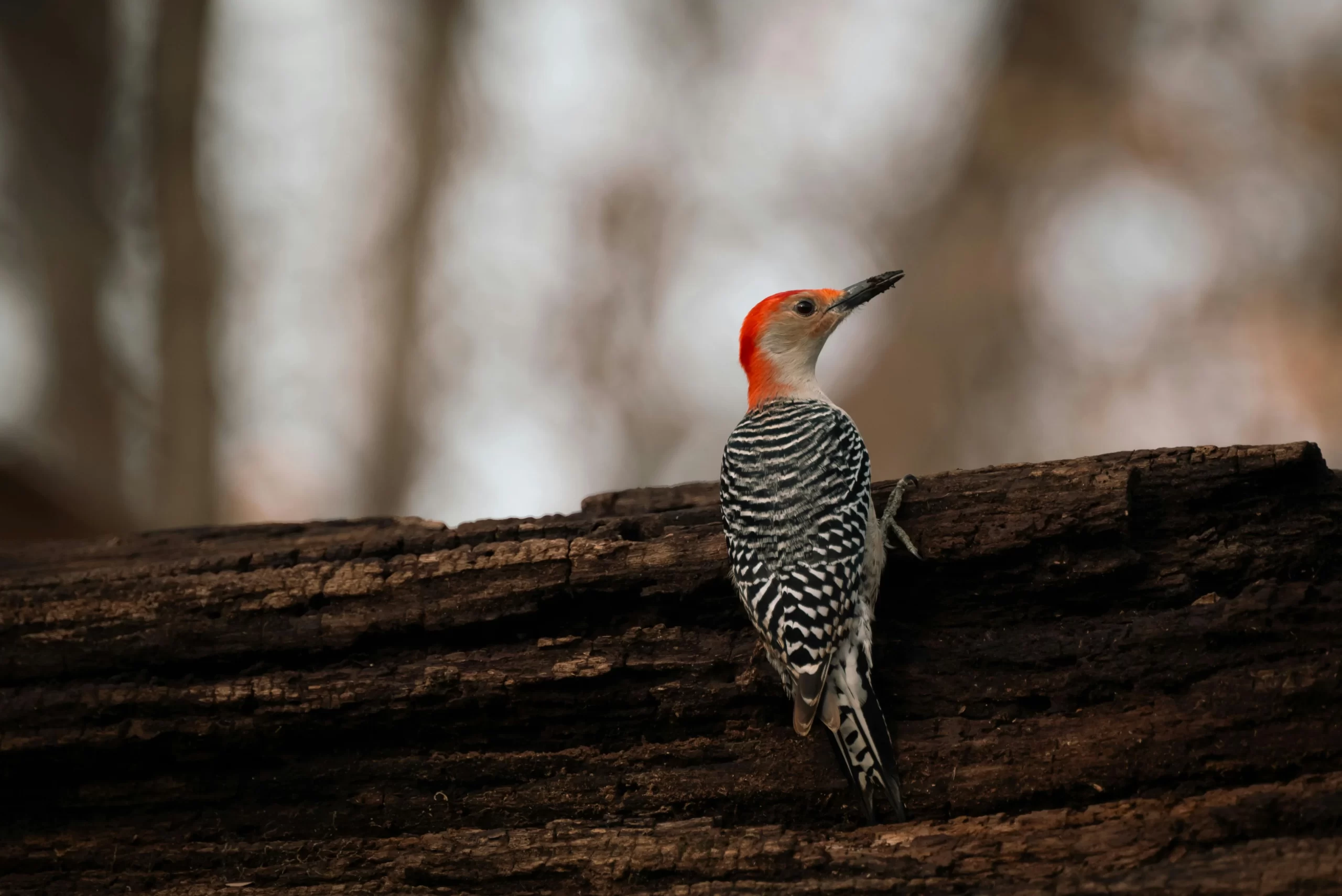Many who live in Georgia are very interested in the fascinating array of birds that may come to a yard to visit bird feeders. The usual suspects likely include common backyard birds in Georgia such as chickadees, nuthatches, finches, and House Sparrows. But what about woodpeckers – are there woodpeckers in Georgia?
Yes, woodpeckers are absolutely found in Georgia! In fact, 8 different types of woodpeckers in Georgia can be observed in the state. It’s okay if you’re not familiar with all of the Georgia woodpeckers yet, as you certainly will be by the end of this article. If you’re ready to learn about woodpeckers of Georgia, keep reading!
Table of Contents
8 Types of Woodpeckers In Georgia
Downy Woodpecker
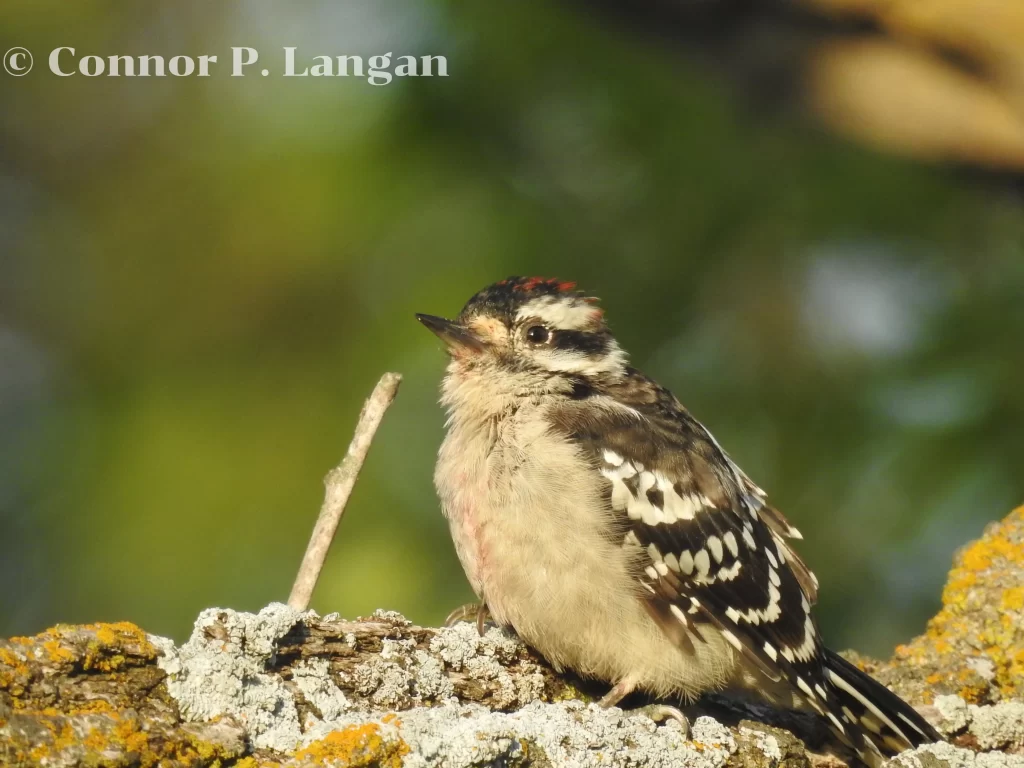
Downy Woodpeckers are abundant black and white woodpeckers in GA. They are the smallest woodpeckers in the state, and this tiny size can be used to distinguish them from the similar Hairy Woodpeckers. Also, note that Downy Woodpeckers have proportionately smaller bills.
Look for these small woodpeckers in Georgia in woodlots, parks, and urban neighborhoods. They may also be found in both deciduous and mixed forests, but they tend to avoid areas that are largely comprised of pine trees.
Downy Woodpeckers tend to be more common in the northern half of the state as the southern pine forests begin to give way to the Appalachian foothills. In addition to foraging on trees, this woodpecker in Georgia may forage in ditches, along trails, or adjacent to roadways on native grasses and flowers that have stems sturdy enough to support their small size.
Hairy Woodpecker
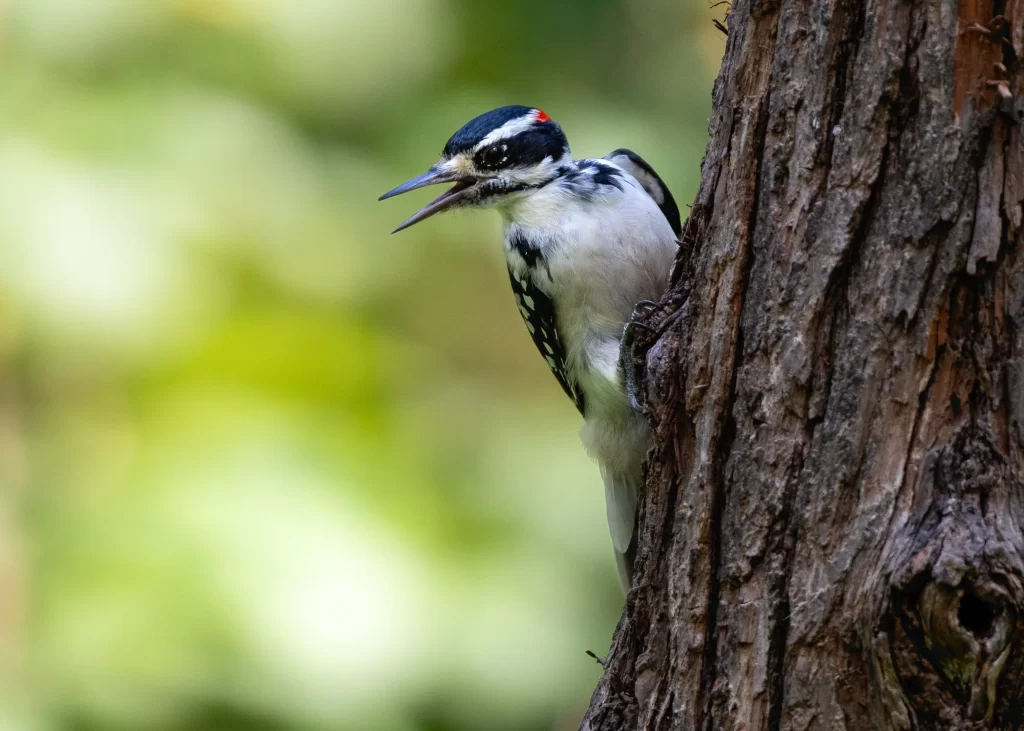
Hairy Woodpeckers are expected species in the north half of the state, but this Georgia woodpecker gets progressively more uncommon as one travels southeast. South of Macon is where numbers really begin to thin out.
Hairy Woodpeckers look much like Downy Woodpeckers, but their bills are proportionately larger. Within the southern pine forests of Georgia, Hairy Woodpeckers seem to prosper in areas that were burned within the last few years.
In the northern half of the state, these Georgia woodpecker species are found in deciduous woods and mixed woodlands. The loud, abrupt “peek” calls given by this species will give their presence away.
Northern Flicker
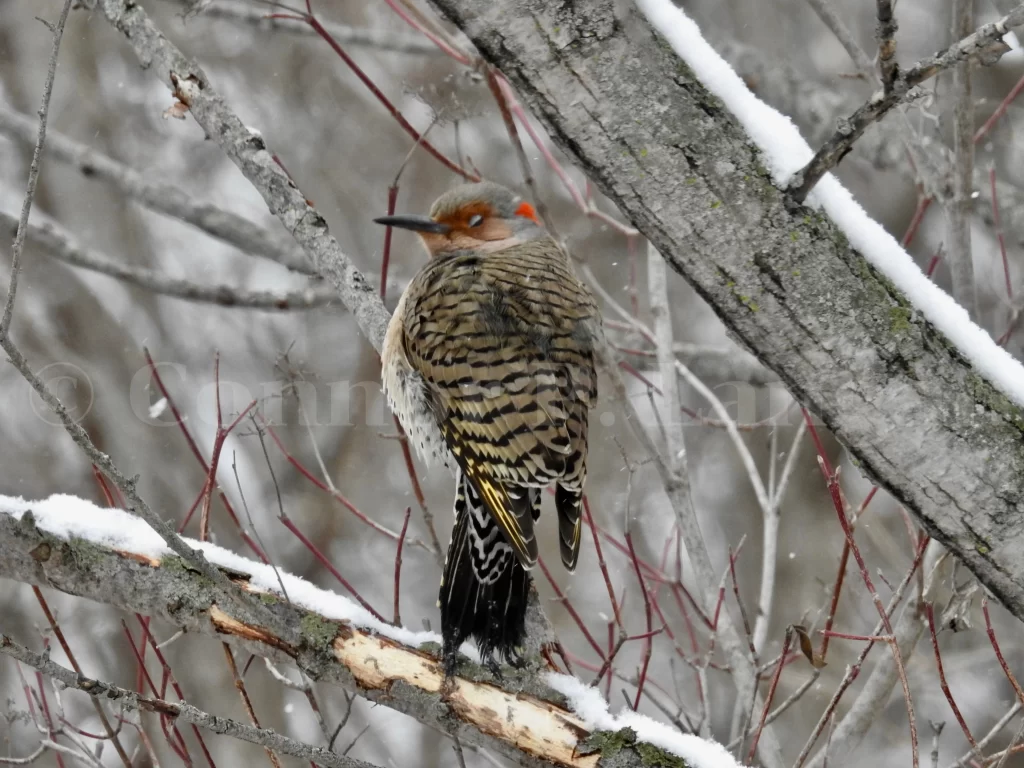
Northern Flickers are common birds in Georgia, with some living here year-round and others migrating north after winter. With the addition of winter birds in Georgia following fall migration, this season is the best time to view this GA woodpecker in the state.
Northern Flickers thrive in open woodlands throughout Georgia. They are not choosy in their habitat selection, as anywhere with dead trees will do. Here, Northern Flickers will forage for ants or termites or excavate nesting cavities.
These types of woodpeckers in GA are notable for their propensity to forage along the ground while looking for ants. Although many Northern Flickers migrate north in spring, plenty stay to nest in the state.
Pileated Woodpecker
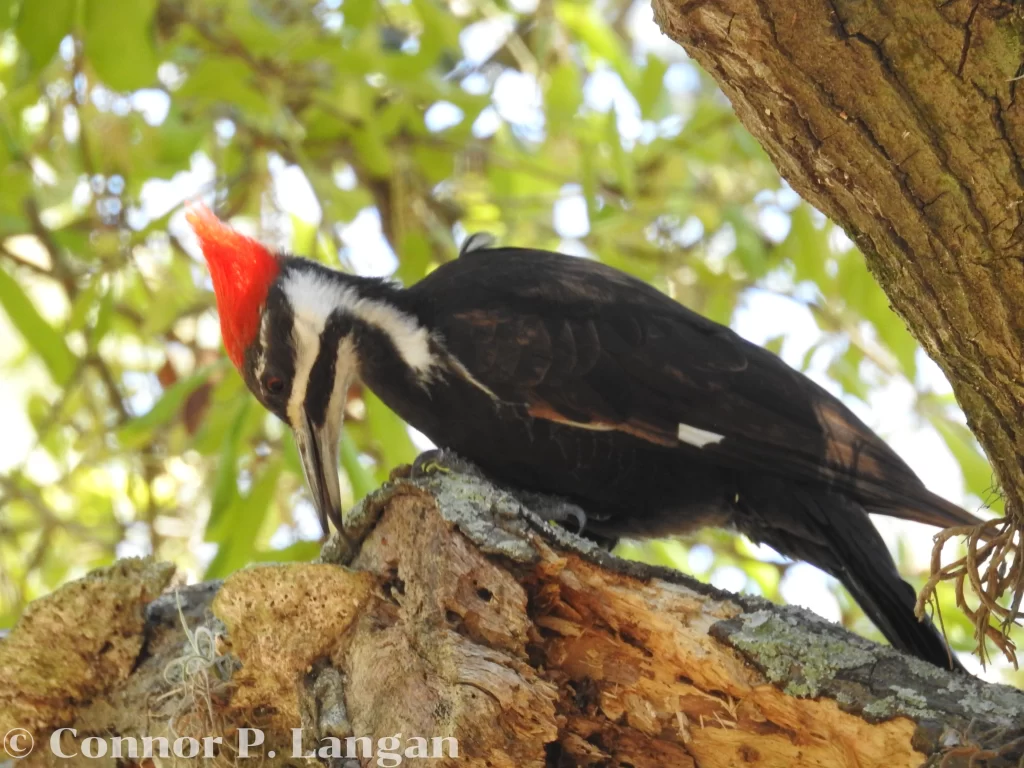
Pileated Woodpeckers are massive Georgia Woodpeckers, being by far the largest of the types of woodpeckers in Georgia. They are nonmigratory, so Georgians can see a Pileated Woodpecker in Georgia any time of year.
Pileated Woodpeckers are comfortable in a variety of habitats within Georgia. Anywhere with ample amounts of trees will be enough to accommodate one of these large woodpeckers in Georgia. They seem to do equally well in pine and deciduous woodlands.
Although Pileated Woodpeckers are often wary birds, this GA woodpecker can grow habituated to human presence around urban areas in Atlanta and other large towns. Such woodpeckers are much easier to approach and photograph compared to Pileated Woodpeckers in remote woodlands.
Red-bellied Woodpecker

Red-bellied Woodpeckers are the most common woodpeckers in Georgia, with nearly 400,000 Georgia eBird checklists containing this species. Red-bellied Woodpeckers are abundant no matter where one travels in the Peach State.
Red-bellied Woodpeckers owe their great success to their adaptability. Indeed, this species of Georgia woodpecker can thrive in forests of any composition. Moreover, they can flourish in parks, neighborhoods, and other small assortments of trees.
These Georgia woodpeckers are regulars at many bird feeders where they dwarf finches in Georgia and other songbirds. Here, they routinely feed on suet or pluck their favorite seeds from bird feeders. Pairs will defend territories during the breeding season and males are easy to differentiate from females with their red hoods.
Red-cockaded Woodpecker
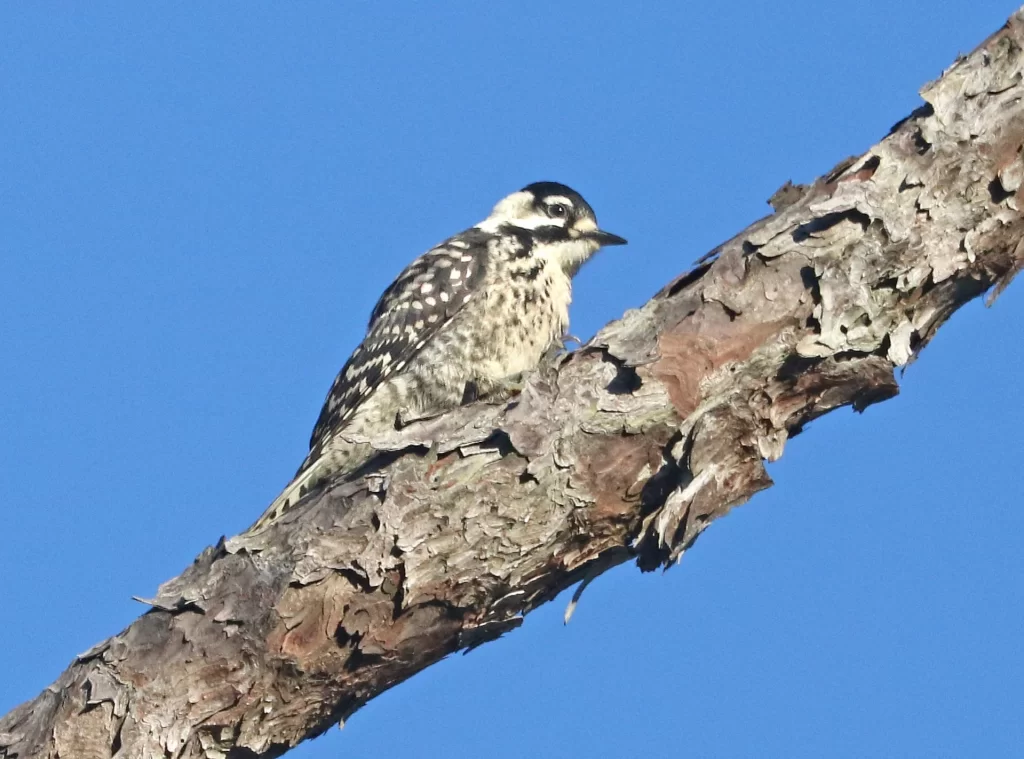
Red-cockaded Woodpeckers are endangered woodpeckers in Georgia. There have only been about 2,400 eBird checklists from the state that have featured them, making them the most sought-after of the woodpeckers of Georgia.
Red-cockaded Woodpeckers have very specific habitat requirements, so those hoping to find them will have to look for these rare birds in Georgia in open pine forests that are managed with fire. These GA woodpeckers often associate in family groups.
The best places to see Red-cockaded Woodpeckers in GA include Okefenokee National Wildlife Refuge, Piedmont National Wildlife Refuge, and a variety of private locations throughout the state. Populations in Georgia are quite fragmented and localized, and this Georgia woodpecker is absent from the northern half of the state.
Red-headed Woodpecker
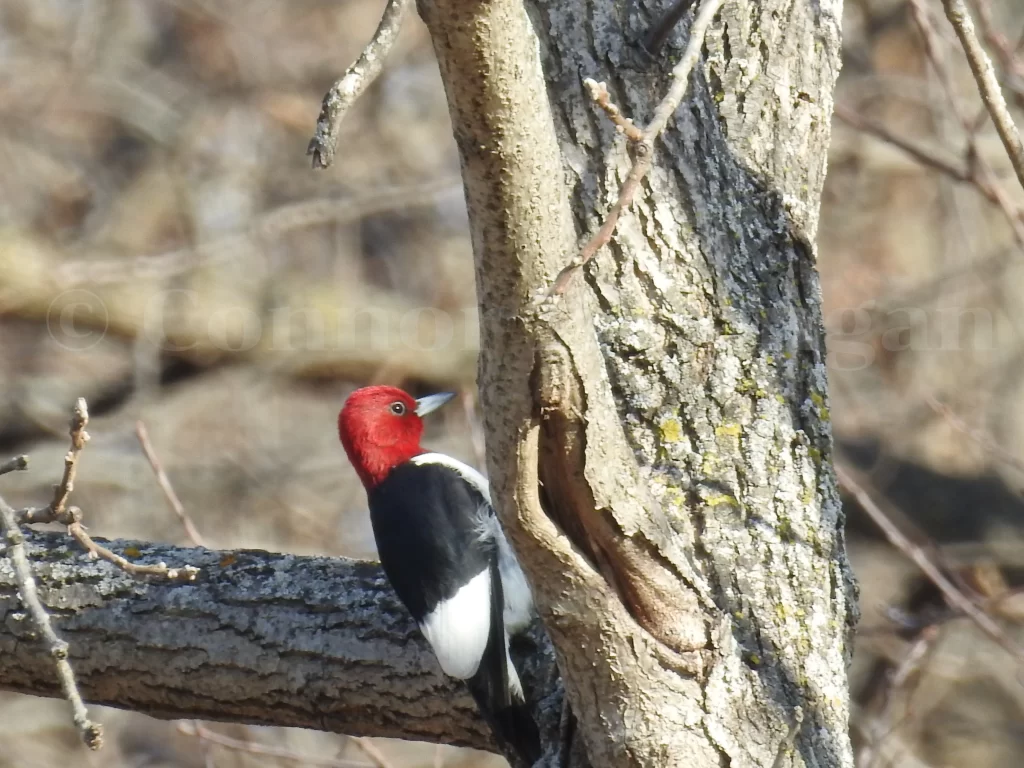
Red-headed Woodpeckers are well-known woodpeckers of GA. Some birds head north in the spring to breed elsewhere, but plenty of Red-headed Woodpeckers remain in the state during summer.
Look for this woodpecker in Georgia in open woodlands with rather clear understories. They do not like overgrown wooded areas, but they are equally at home in pine or deciduous trees.
Red-headed Woodpeckers are the only sexually monomorphic Georgia woodpeckers, as it is not possible to tell the males from the females based on plumage. They are active birds, and they are often seen flying out from open perches to grab insects in midair.
Yellow-bellied Sapsucker
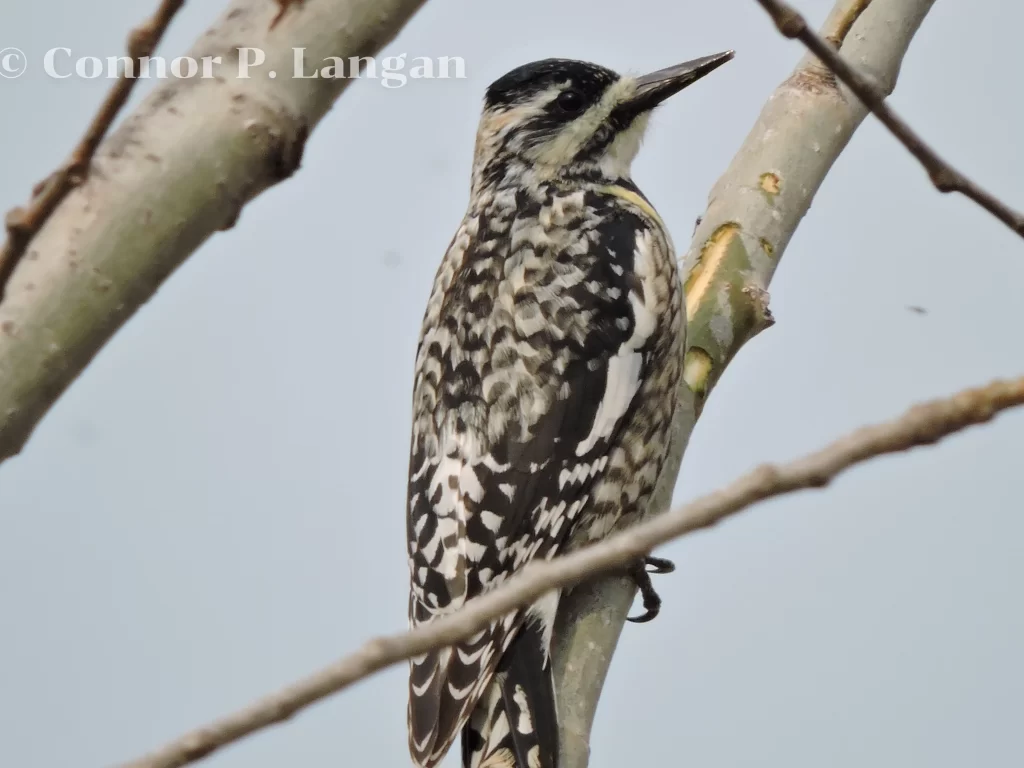
Yellow-bellied Sapsuckers are subtle woodpecker species in Georgia. These medium-sized woodpeckers in Georgia reside in the state from October through March, but the entire population departs to breed elsewhere.
The cryptic coloration of Yellow-bellied Sapsuckers makes them difficult to detect. Thankfully, their whiny calls help birders to key in on their presence.
Yellow-bellied Sapsuckers can be found in a variety of wooded habitats. They will drill sap wells in trees as a means of capturing insects and harnessing the nutrient-rich sap of trees. These woodpeckers of Georgia often check their wells several times of day, and they become valuable sources of food.

